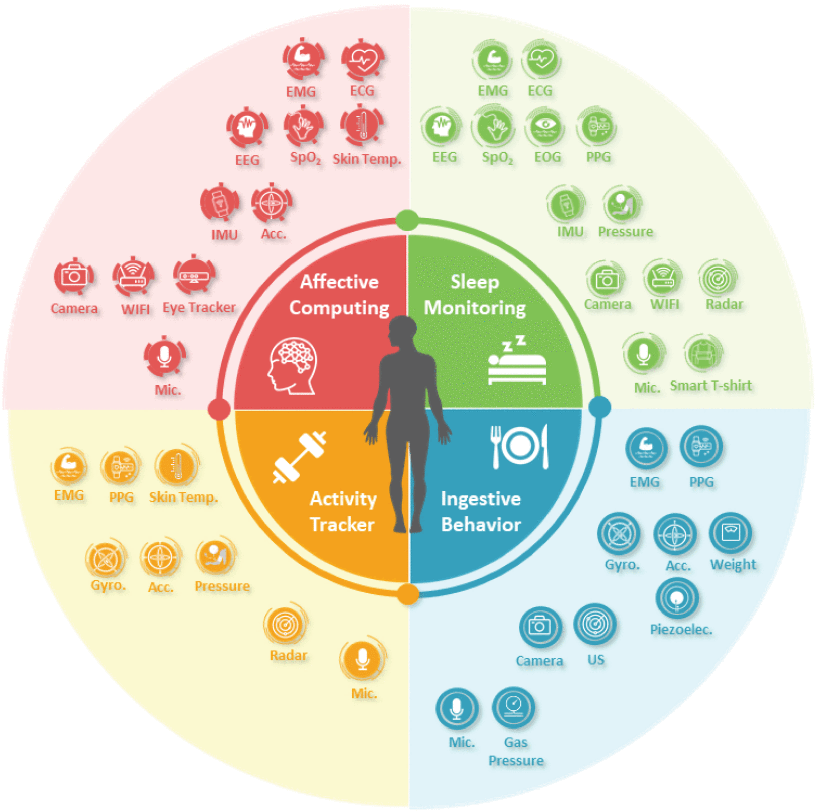Sensor-Driven Achieving of Smart Living: A Review
Implementing wireless sensor networks can transform ordinary homes into smart homes. It significantly improves the quality of life for users, particularly the elderly. The applications from the network use the data collected by various sensors, including biomedical sensors, mechanical sensors, non-contact, and other types of sensors, to provide personalized and more efficient services. The combination of these different types of sensors enables the comprehensive coverage of all areas of sensor applications, i.e., fitness tracking, emotions analysis, sleep tracking, and food intake monitoring.
Fitness trackers track biometrics like heart rate and blood oxygen during sports and physical activities. The devices use advanced technologies like wearable electrocardiography (ECG) electrodes, photoplethysmography (PPG) sensors, and electromyography (EMG) electrodes to study physical movement. It helps in monitoring heart health, particularly for people with cardiovascular diseases. These technologies are combined with temperature sensors and accelerometers to measure body temperature and muscle activity. Portable sensors measuring force and pressure help to analyze movement and gestures. The different type of sensors embedded in a smart wearable device for fitness tracking provides physical activity and health data that assist in monitoring health.
The basic human emotions of happiness, sadness, anger, fear, disgust, and surprise can be analyzed by affective computing. It could be done by studying the physical alterations of the brain through brain-scanning techniques, like positron emission tomography (PET), functional magnetic resonance imaging (fMRI), and electroencephalography (EEG). Analyzing heart activities could also be used to study emotions. It can be monitored by ECG or the changes in blood volume pulse (BPV) by wearable sensing devices with an optical facility. Researchers are studying to get emotion analysis using a combination of EEG signals and data obtained from various sensors monitoring peripheral physiological movements, like eyes, face, breathing, etc.
Sleep monitoring is essential for diagnosing sleep disorders. Researchers are developing non-invasive sleep monitoring systems to improve the accuracy of sleep disorder diagnosis, replacing the current disruptive method of Polysomnography (PSG). Additionally, non-contact sensors such as radio frequency (RF) based sensors and cameras have been used in sleep monitoring due to low interference and high convenience. Microphones and smart textiles have also recently grabbed researchers' attention.
Various sensors are used to track food intake habits, including sensors on eyeglasses to measure jaw movement and muscle contraction during chewing, and other devices, such as a microphone, to measure blood flow in the ear canal. Researchers also use a camera attached to eyeglasses to take continuous images to provide information on emotional eating habits. Ultrasonic Doppler sensors and microphones can detect chewing and swallowing events and classify food intake. However, these methods have limitations, like in the detection of liquid intake, and are sensitive to environmental factors.
Sensor selection and combination are crucial for monitoring human activities like sleep, heart rate, emotions, and food intake. Additionally, privacy is a concern when using wearable devices to collect sensitive information, including health data and images/voice recordings. Future research should focus on finding more ways to protect personal information and better services to maintain users' privacy.




